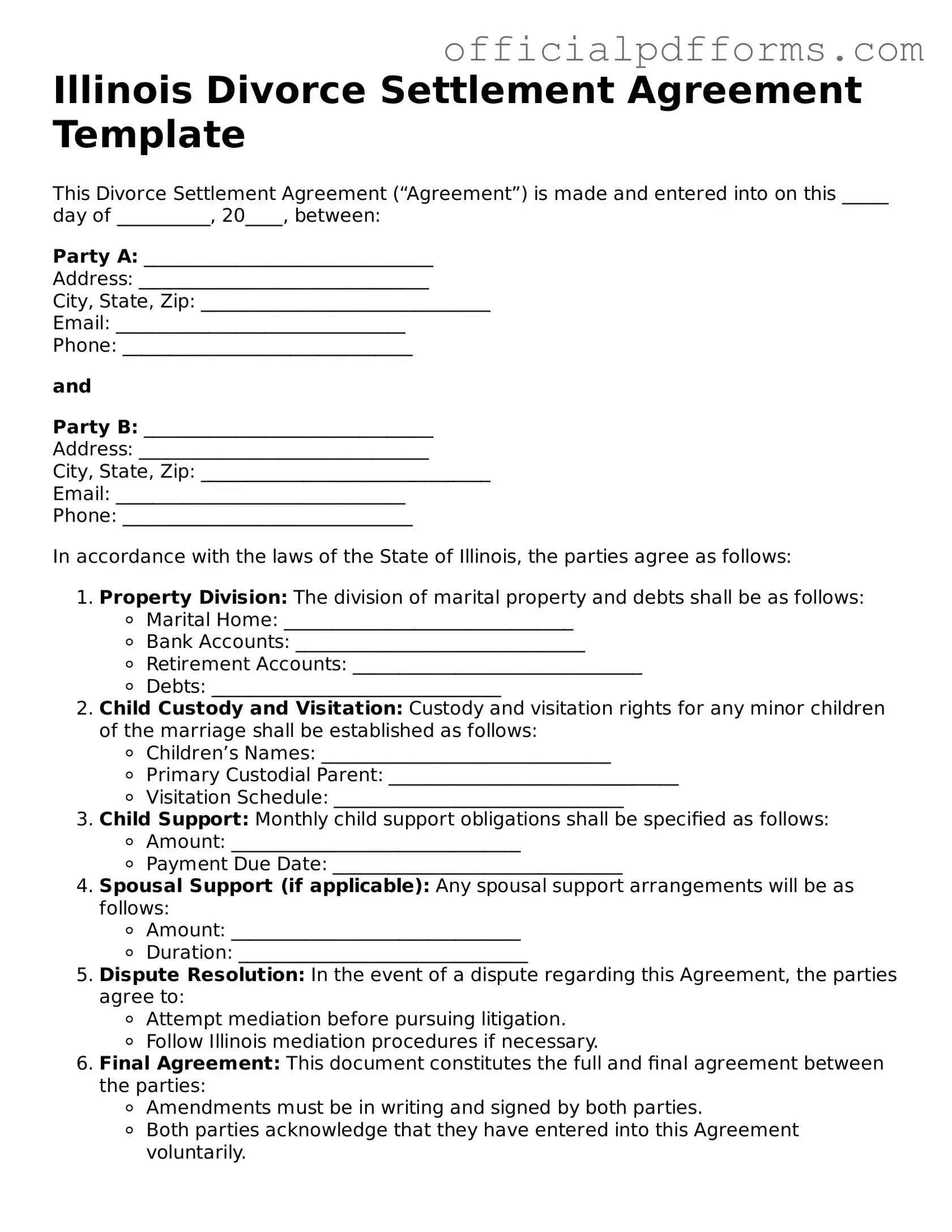What is an Illinois Divorce Settlement Agreement?
An Illinois Divorce Settlement Agreement is a legal document that outlines the terms of a divorce between two parties. It details how assets and debts will be divided, as well as arrangements for child custody, visitation, and support. This agreement is essential for ensuring that both parties understand their rights and responsibilities after the divorce is finalized.
How do I create a Divorce Settlement Agreement?
Creating a Divorce Settlement Agreement involves several steps:
-
Gather financial documents, including income statements, bank statements, and property deeds.
-
Discuss and negotiate the terms with your spouse. This may include asset division, debt responsibility, and child-related issues.
-
Draft the agreement, ensuring all terms are clearly stated.
-
Review the document with a legal professional to ensure compliance with Illinois law.
-
Both parties must sign the agreement in front of a notary public.
Is a Divorce Settlement Agreement legally binding?
Yes, once signed and submitted to the court, a Divorce Settlement Agreement becomes legally binding. This means that both parties are required to adhere to the terms outlined in the agreement. If one party fails to comply, the other party can seek enforcement through the court.
What happens if my spouse and I cannot agree on the terms?
If you and your spouse cannot reach an agreement, you may need to consider mediation. Mediation involves a neutral third party who helps facilitate discussions and negotiations. If mediation fails, you may have to go to court, where a judge will make decisions regarding asset division, custody, and support.
Can the Divorce Settlement Agreement be modified after it is signed?
Yes, a Divorce Settlement Agreement can be modified, but only under certain circumstances. Changes may be necessary due to significant life events, such as a job loss or a change in custody needs. To modify the agreement, both parties must agree to the changes, and the new terms must be documented and submitted to the court for approval.
